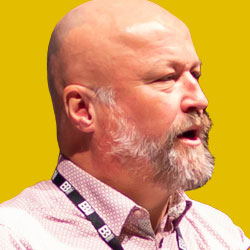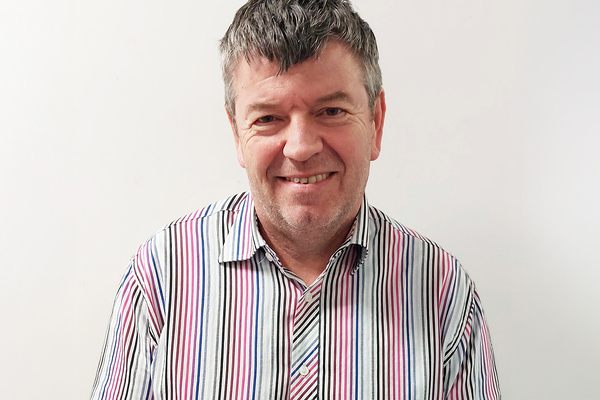How to make the most of SHDF funding
Inside Housing speaks to Chris Ellison at housing association B3Living and Ben How at contractor Breyer to find out how landlords can best use the funding, from retrofit programmes to procurement frameworks

In association with:

The Social Housing Decarbonisation Fund (SHDF) is well and truly under way. The government offered £179m to 69 projects under the first wave of the scheme, with the intention of improving tens of thousands of homes, cutting emissions and saving money for tenants. A total of £3.8bn has been earmarked for improving the energy performance of social rented homes over the next decade.
It is a significant amount of money that could play a big role in moving the sector towards its 2050 net zero target. This first wave represents an opportunity for the sector to work out how to make the most of it. Some providers are just starting out on this journey, while others are further along and have knowledge to share.
“At South East Consortium (SEC), we have been supporting our members and the wider social housing sector with the procurement, mobilisation and delivery of these programmes,” says David Smith, head of business partnerships at procurement specialist SEC. “For a market that is rightly regulated and full of guidance, mobilising these schemes quickly can be a challenge. We want to ensure the narrative for these programmes remains positive and we celebrate those paving the way and setting an example for others. I was proud to judge the inaugural Unlock Net Zero Awards and the progress that is being made was clearly evident.”
Inside Housing spoke to Chris Ellison, executive director (operations) at B3Living, a 5,000-home housing association based in Hertfordshire, and Ben How, decarbonisation director at contractor Breyer Group, to find out how they have managed the disbursement of SHDF money – and what they have learned so far.
Chris Ellison, B3Living
Could you give an idea of the scale of retrofit works you’re planning to undertake over the next three years?
Within B3Living, we’ve brought together a net zero working group, including colleagues from across the organisation. We’re looking at everything we do to see how we could be more efficient – from office waste to how we build new homes. We have a clear strategy supported by a commitment from the board downwards, as well as a motivated workforce. Retrofit works are a key part of this and we are initially looking at a spend in excess of £5m over the next three years to improve around 300 properties. It’s the first phase of our extended retrofit strategy, which looks at the needs of more than 5,000 properties.
What challenges did you encounter when preparing to mobilise this programme, and how did you overcome them?
Retrofit at this scale is new to B3Living and, like many, we are learning as we go on this journey. We did not necessarily have all the capacity and resources to deliver this on our own, which is why it has been so important to have the support of – and ability to work collaboratively with – trusted partners, such as Greener Herts Consortium, SEC and Breyer Group. Having enthusiastic and committed partners enables us to tackle the issues of supply chain, compliant delivery, and supporting and encouraging local employment.
What advantages are there to using a procurement framework?
Working with SEC enables us to streamline our procurement process by allowing us access to specialist frameworks that connect us to a variety of approved suppliers and partners that are ready to deliver projects. It has also provided B3Living with support and access to skills, enabling us to procure quickly and efficiently with confidence, which will be key to delivering the SHDF-funded schemes within the required timescales.
How will this retrofit programme benefit your residents?
For B3Living, the most important factor is ensuring our residents are living in cosier homes, while tackling issues around cost of living and rising bills. If we can achieve this, while reducing the environmental impact of our stock, then we will have been successful on this journey.
What else have you learned?
We understand that retrofitting at scale can be challenging, but schemes such as this will be a fundamental part of our future asset management strategy. B3Living wants to ensure customers have safe, secure and comfortable homes that are both fit for them to live in and remain so, and which are affordable to run.
Ben How, Breyer Group
What advice would you give to any social landlords who are mobilising SHDF programmes?
There are a number of challenges that need to be addressed early for any SHDF scheme. These include ensuring that all stakeholders understand the eligibility criteria, parameters and timescales of the funding; ensuring early resident and supply chain engagement; and embracing collaborative working partnerships. It is also important to understand the implications of delivering a scheme under the PAS 2035 guidelines [the British standard for whole-house retrofit], as it introduces both new compliance processes and the roles of retrofit assessor, co-ordinator and designer, which might not have been required for similar schemes delivered in the past. The first hurdle for any scheme is having a good understanding of the client’s stock and ensuring quality retrofit assessments are carried out for each property. This ensures that the evaluation and design can be completed with confidence and that all required targets are addressed. From pre-construction, through to delivery and post-completion, it is imperative that all residents are supported through the journey. They need to be helped to understand how their houses will be improved, and that certain elements may work differently than they are used to.
Ben How joined Breyer Group in March 2023. He is an energy efficiency and commercial professional with more than 15 years’ experience in the construction industry. His areas of expertise include renewable tech, low-carbon housing, retrofit, modular housing, sustainability strategies and cost management.
What new practices and innovations does the SHDF programme facilitate?
One of the most overlooked points in understanding and improving retrofit is performance monitoring, which is still not carried out much in the industry. At Breyer, we have been liaising with companies that provide innovative performance monitoring and smart control solutions that can enable us to monitor and evaluate the performance of retrofitted properties. This provides essential data to the landlord, but it also potentially provides energy-saving features. We would be keen to explore the options of including such technology and the benefits this may bring to the scheme.
What is the priority for landlords to consider next?
Schemes such as the SHDF really help to accelerate the retrofit of domestic properties. With nearly two million social housing properties to be improved to an Energy Performance Certificate Band C standard, there is still a long way to go, but projects such as these will be key to kick-starting larger retrofit strategies and to helping develop the knowledge, experience and supply chains required to make this possible.












